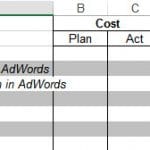Facebook’s a great place to strengthen connections, word-of-mouth marketing and customer loyalty among your health club, yoga studio, and wellness program clients. It works well in both the consumer wellness and corporate wellness settings.
These marketing best practices help your health and wellness business make the most of the time it invests in Facebook:
Assign responsibility
- Assign daily responsibility for Facebook to a single person on your staff.
- Choose someone with an affinity for this kind of work. Ideally, they’re “connector personalities” with good judgement: they never met a stranger and they love chatting with people. They’re often the folks that pull together potlucks, training rides, baby showers, group lunches and the like.
- Set expectations for how often they should post new content and how quickly they should respond to comments – usually within a couple hours.
Follow and like
- Follow and like your followers when they seem to have a genuine interest in your area of expertise.
- Post on the walls of your most active, influential posters with the largest networks. Don’t post only on your own Facebook site.
- Don’t be shy….periodically post a request for your followers to “like” your page.
Monitor
- Monitor Facebook posts to your wall and respond throughout your business day – every two hours is the guideline we recommend for most health and wellness businesses. More frequently is fine, too – but neither essential nor practical for many of you.
It’s smart for larger businesses, or those with hot-button topics that can blow up fast, to monitor and respond after-hours, too. NutshellMail is a free and handy way to stay on top of your health club’s Facebook activity if you’re not glued to a desk or smartphone 24/7.
Update account settings
- On the first of the month, change your cover photo – don’t just set it and forget it.
- On the fifteenth of every month, change your profile picture. Yes, Facebook recommends using your logo, but a different, highly relevant image is fine too. For example, if your marketing theme for 2012 is “Everyone’s a champion” then images reflecting that theme – medals, trophy cups, etc. – would be good choices.
- Or say you’re running a six-month training program for a particular event – use an image that represents that event in your profile for that six-month period.
Resolve problems
- When someone posts a complaint or reports a problem, apologize publicly and sincerely (no boilerplate!) and follow up fast, privately.
- When appropriate, post the final resolution. For example, if you fix a pothole after a complaint, post a picture of the new patch and thank your follower for giving you a heads-up.
Respond to posts
- Tailor your responses to the original post. Be personal and specific. Ask yourself how you’d keep the conversation going if you were chatting with a friend.
For example:
If your friend Beryl posted about her 40-mile bike ride in 100-degree weather, would you really just say “Great job?” and then promptly change the subject? Of course not.
So don’t do that when your customer Beryl posts about her 40-mile ride in 100-degree weather, either.
Instead, use her name in your reply and say something like “Beryl, are you completely melted at this point? How did you handle hydration, anyway?”
Depending on how she responds, then you might respond with a link to your website to your DIY sports drink recipe, or briefly mention your upcoming seminar on “How To Heatproof Your Summer Workout.” Or you might ask her for her opinion about Camelbak, or whether she feels like keeping water cold on a long hot ride really makes a big difference.
The whole point is to keep the conversation going – because the longer you keep it going, the likelier it is to strike a chord with other followers who’ll then chime in.
You’ll usually find that 80% of your posting activity comes from 20% of your followers. It’s easy to let their comments and questions dominate the conversation.
SO: Remember that you’re writing for an “invisible audience”, too – folks who lurk!
They read all the updates, but they never post. Consider what questions they might have in response to other posts – and respond with those questions. Lurkers will also sometimes participate in anonymous or group activities, like polls and contests. So consider this audience as you plan your content strategy.
Post new content
Post throughout the week, not just on the days you’re open. For many wellness businesses, Sunday is one of the most active days on Facebook.
- Use Facebook’s scheduling tool to create and schedule posts to go out days, weeks, even months in the future.
80% of your posts and content should be for or about your followers. Only 20% should be content that promotes your business.
- Always post reminders about time-sensitive topics – upcoming seminars, registrations, programs, special events featured movies in the cardio studio, etc.
- Always post time-sensitive customer-service updates – closed due to icy roads, no A/C in the spinning studio, the virtual golf simulator’s out of order until Monday, we’ve cleared the snow from the parking lot!
Choose your content with an eye to encouraging participation and interaction.
- Specific, local, relevant content nearly always outperforms generic or rehashed health tips. If you’re in Chicago, an article about obesity among Chicago kids is much more meaningful than an article about overall obesity trends in the U.S.
Ongoing activities encourage ongoing participation on Facebook. FYI, contests are most effective when there’s more to do than just vote. Ongoing activity examples include:
- “scavenger hunts” where people post their finds (this week’s challenge: find unexpectedly healthy choices at restaurants)
- themed workout check-ins (“Moms In Menopause”) or nutrition challenges (The “No Sugar, No Way” Challenge) are just one example
Relevant original photos – not stock graphics – always get lots of attention. Plus, the first tile on the Timeline features photos. Examples include:
- A photo of a very well-known speaker from the Food & Nutrition conference or a local civic group you attend, with a post about some relevant point from the speech
- Demonstration photographs – how to gulp down water while cycling
- A customer putting their wellbeing to good use – volunteering to walk local therapy dogs in training, climbing Everest, clearing brush, racking up 200,000 airmiles on business thanks to a smart fitness and nutrition plan that kept them going
- A shot of the pothole in the parking lot of your wellness center
- A shot of the new pool being painted at your aquatics center
- A picture of your 1000th health club member
- A funny picture of a client’s kid picking up a tiny dumbbell or growing broccoli
- Candid action shots with just a few folks, all named, and good captions beat unidentified posed group pictures every time.
- Include a group of facility pictures in your album – inside, outside, street view, etc. to help potential customers easily spot you.
Integrate blogs and newsletters
- Post a link to your email newsletter every time you send it out. Constant Contact lets you do this automatically for Facebook, Twitter and LinkedIn, by the way.
- If your email contains multiple articles, consider also sprinkling links to individual articles throughout the month.
- If you have a blog, integrate it with Facebook so that your blog posts show up automatically. Just Google for instructions.




